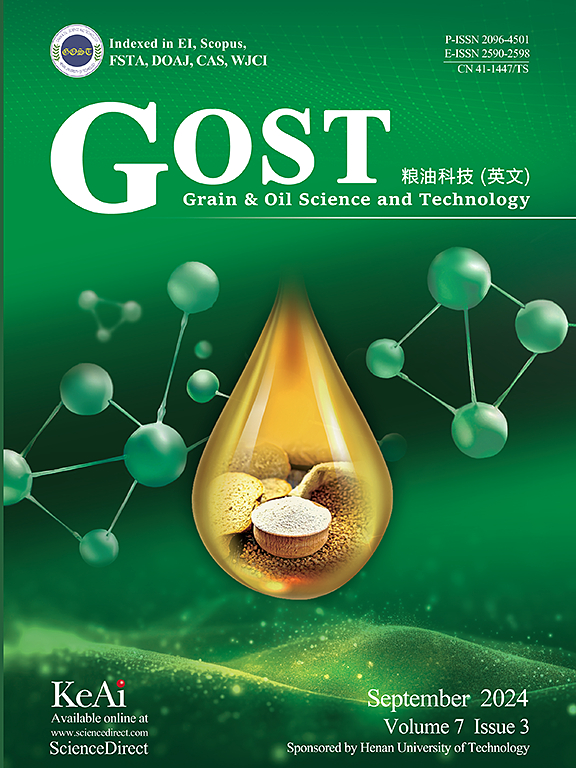Application of a novel solid superbase catalyst of Na2O/molecular sieve analogs (HND-63) in synthesis of plant-based monoglyceride and its catalytic mechanism
Q2 Agricultural and Biological Sciences
引用次数: 0
Abstract
Monoglyceride (MAG) is a widely used nonionic surfactant. In this work, an economic and green solid superbase HND-63 was utilized to synthesize monoglyceride, and the independent variables were examined to achieve the highest MAG content. HND-63 was characterized in order to explore the potential reasons for its high MAG selectivity. At the same time, the catalytic mechanism of HND-63 in glycerolysis reaction was also focused on in this paper. A maximum of 72.50 % MAG content was obtained under the optimal reaction parameters (reaction temperature of 110.5 °C, reaction time of 209 min, molar ratio of glycerol to oil of 9.2:1, and catalyst dosage of 10.1 %). The activation energy Ea and the pre-exponential factor A of the reaction were 61.37 kJ/mol and 6.33 × 106 mol·L−1·min−1, respectively. The basic site of HND-63 is O2−, which is loaded on molecular sieve analogs in the form of Na2O, thus providing great convenience for recovery. The findings offer a novel solid superbase that could be potentially applied to glycerolysis reactions, providing the foundation for further development of plant-based surfactants.

新型Na2O/分子筛类似物固体超碱催化剂(HND-63)在植物基单甘油酯合成中的应用及其催化机理
单甘油酯(MAG)是一种应用广泛的非离子表面活性剂。本研究采用经济环保的固体超碱HND-63合成单甘油酯,并对各自变量进行了考察,以获得最高的MAG含量。对HND-63进行了表征,探讨其高MAG选择性的潜在原因。同时对HND-63在甘油水解反应中的催化机理进行了研究。在反应温度为110.5℃,反应时间为209 min,甘油与油的摩尔比为9.2:1,催化剂用量为10.1%的条件下,MAG含量最高可达72.50%。反应的活化能Ea和指前因子A分别为61.37 kJ/mol和6.33 × 106 mol·L−1·min−1。HND-63的碱性位点为O2−,O2−以Na2O的形式负载在分子筛类似物上,为回收提供了极大的便利。这一发现提供了一种新的固体超碱,可以潜在地应用于甘油水解反应,为进一步开发植物表面活性剂提供了基础。
本文章由计算机程序翻译,如有差异,请以英文原文为准。
求助全文
约1分钟内获得全文
求助全文
来源期刊

Grain Oil Science and Technology
Food Science
CiteScore
7.30
自引率
0.00%
发文量
69
审稿时长
12 weeks
期刊介绍:
 求助内容:
求助内容: 应助结果提醒方式:
应助结果提醒方式:


